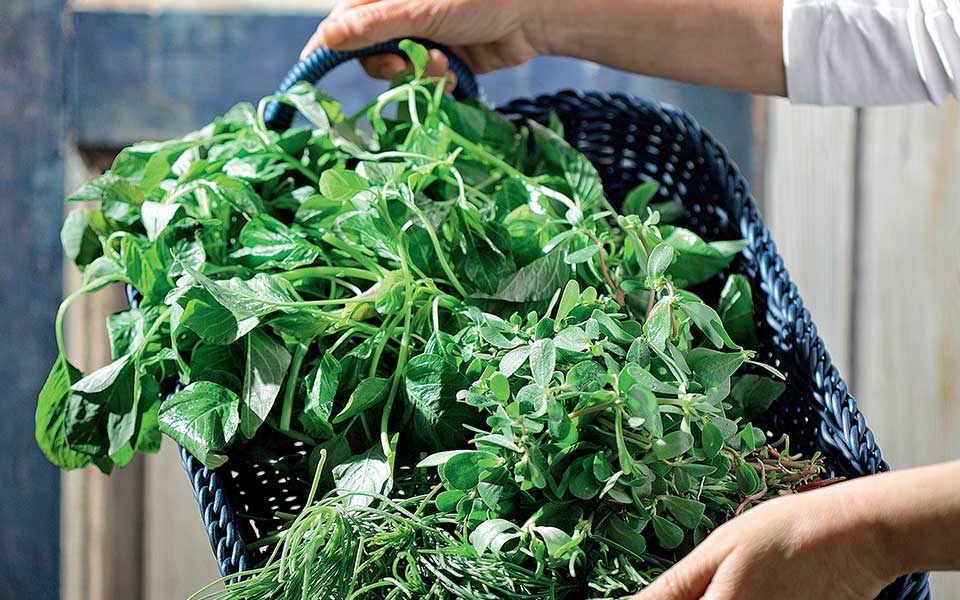Are you from Kea?” asked the vendor at my local farmers’ market, as he watched me picking the feathery, gray-green weeds from his big pile of various, more attractive-looking horta (wild greens). He went on to say that most of his usual customers avoided vromohorto, or “stinky-green,” as the plant that that my Kean grandfather taught me to love is called.
Somewhat smelly, vromohorto (white mignonette or Reseda alba) becomes wonderfully sweet when blanched, losing its unpleasant odor. On Kea, islanders know where the green sprouts after the winter rains and they rush to collect it. Vromohorto beautifully complements the bitter galatsides, a kind of wild chicory, another favorite green, along with tangy leaves of provatsa (sea lavender, Limonium maritimum), a plant cultivated in other countries mainly for its papery flowers which, even when dried, remain attractive and colorful.
I was ten when my grandfather taught me which greens are edible and which aren’t. Horta can be sweet, tart or bitter, and some can be wonderfully aromatic. Greek cooks have different opinions about the greens they use; which ones are good in stews, which go best together, and which make the best hortopita, or greens pie. Most often, we blanch different kinds of horta together and eat them as a boiled salad or side dish, topped with fresh lemon juice and olive oil.
Greeks probably began foraging wild leafy greens because they had little else to eat, but we continue to gather and eat them today because we love them!

© Shutterstock
The greens we consume today are probably the same we encounter in the texts of Theophrastus and other ancient authors, with a few name changes: ascolymvros has become scolymos, sonchus is now zochos, and caucalis is kafkalithra. As these plants – their names and uses – have never been part of any school curriculum, we can conclude that what we know about them has been passed down orally from one generation to the next over the centuries.
In the glove compartment of our car, we always keep an Opinel knife. It’s there in case we spot edible greens during our rides around the island. Greeks probably began foraging horta because they had little else to eat, but we continue to gather and eat them today because we love them!
From winter and up to early spring, there are plenty of wild greens in the hills and mountains that surround villages and big cities alike. Aficionados make special excursions to gather them, armed with a knife and a bag or a basket. These foragers can be spotted anywhere; far away on steep hills, or right next to busy highways. A friend told me once that he had seen Greek-Americans gathering greens on a sidewalk in New Jersey. These days, though, most city people buy horta from the weekly street markets; they have become quite expensive, a real delicacy.
Like many islanders, my grandfather would drink the broth in which the greens were boiled, adding a little lemon juice. This tangy-bitter broth is now the epitome of hip – “a cleanser.” Scientists have found that most of these wild weeds contain a fair amount of antioxidants and other nutrients which promote good health.












